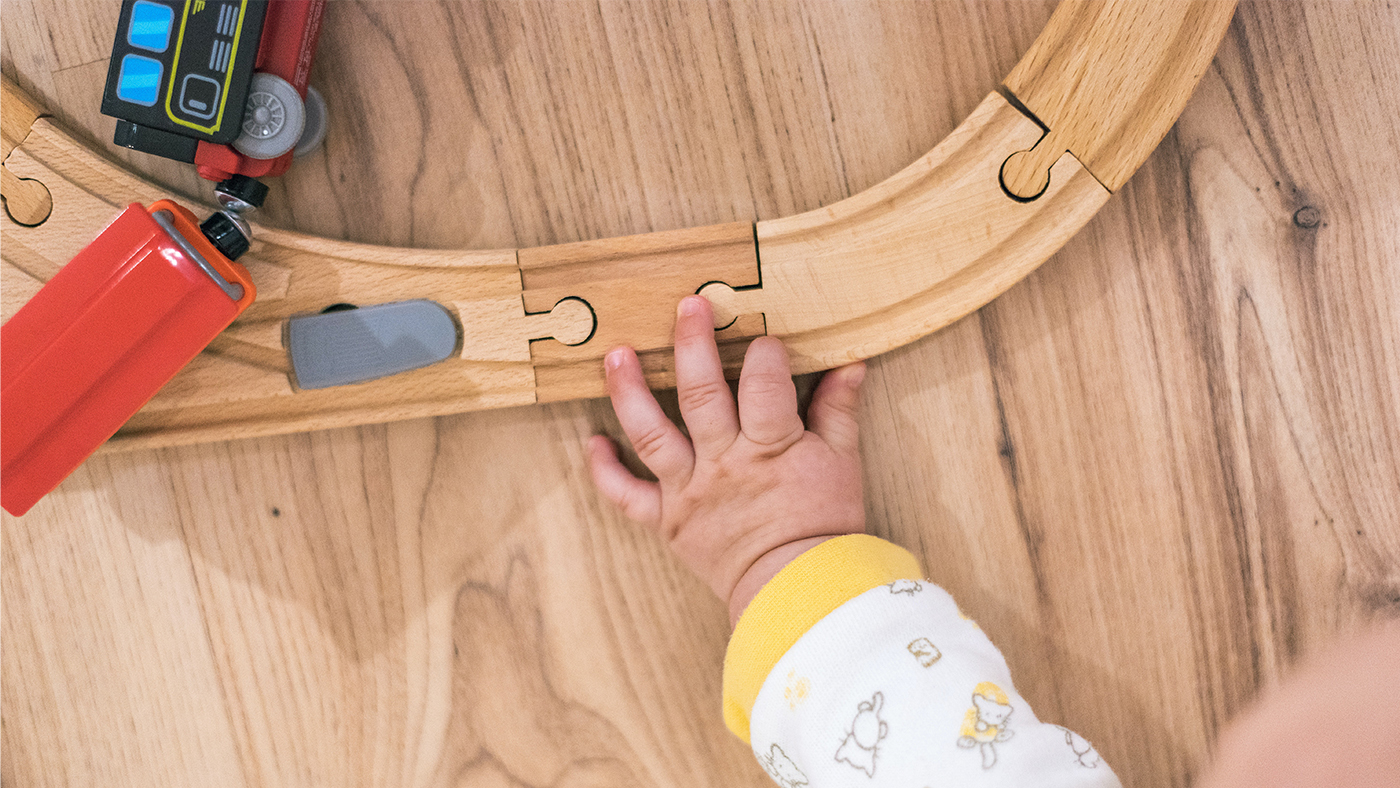Your baby is getting skilled at connecting now

Your baby has been listening to a wide range of words while you have been going about your everyday activities. Lots of common words will have been used during these times, like nappy, sleep, kiss and hello. Through hearing these on a regular basis, your baby will be becoming more interested in what you are saying to them as some of the words are beginning to make sense.
Shared attention and cues that say 'I want your attention!'
Shared attention can be gained by using eye contact, gestures, and/or vocalisations. We know that your baby has developed the skill of seeing depth and they are able to use their clearer vision to reach for objects and to see people around them. They are also gaining control of their visual attention, resulting in short bursts of sustained attention.[1]
During your everyday routines, your baby will be starting to give you cues to let you know they want to get your attention. Crying may indicate they are in need of something and a squeal and/or babble is most likely them letting you know that they are happy. Your baby is starting to understand the basics of how to use shared attention and start an interaction. With these emerging skills, your baby will be better equipped to interact with others based on their new abilities and interests.[2]
Leading interactions through play
Your baby is learning the most basic kind of effective communication while playing. They are linking their developing knowledge of interaction and trying to use this information to engage you. When your baby is playing, they can show you what they are interested in by looking at, or reaching for, objects. When you comment on what they are doing or the object they're looking at, they are already interested and perhaps more likely to remember what you say, or link what you say to what is happening.
When your baby looks at an object and makes a sound, the reaction they get may encourage a further response from them, helping your baby to learn how interactions work. If they have been responded to with interest and pleasure, there is an emerging understanding that they can reciprocate this with a cheerful and lively response. This is a major event in their development of language and interaction.[2]
Your turn-taking encounters
The interactions between you and your baby will start to increase. In a few months, the turn-taking encounters will last for much longer as your baby learns new vocalisations to keep you present and engaged. The conversation about objects will mature, and you'll probably find lots more opportunities for rich, descriptive words to be used when you and your baby are enjoying playtime together.
Happy talking!
References:
[1] Johnson, M. H., Posner, M. I., & Rothbart, M. K. (1991). Components of visual orienting in early infancy: Contingency learning, anticipatory looking, and disengaging. Journal of Cognitive Neuroscience, 3(4).
[2] Sample Gosse, H., & Gotzke, C. (2007). Parent/Caregiver Narrative: Interacting 4 - 6 Months. In L.M. Phillips (Ed.), Handbook of language and literacy development: A Roadmap from 0 - 60 Months. [online], pp. 1 -8. London, ON: Canadian Language and Literacy Research Network. Available at: Handbook of language and literacy development.